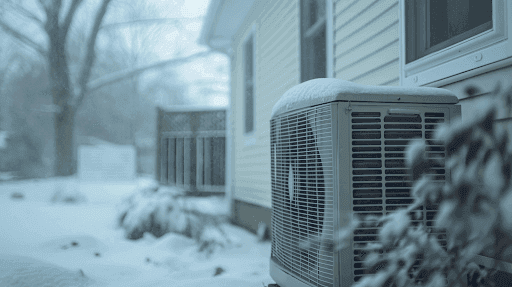What Is the Cold Climate Heat Pump Challenge?

DOE-Sponsored Initiative Enters Installation, Monitoring Phase
Heat pump users are aware of their energy-efficient heating and cooling capabilities, but there’s a catch. Traditional air-source heat pumps become less efficient when temperatures drop below about 40 degrees Fahrenheit, requiring auxiliary heating sources like electric resistance heating or gas furnaces.
However, recent advancements in cold-weather climate heat pumps offer a potential solution. Recognizing this, the U.S. Department of Energy (DOE) initiated the Residential Cold Climate Heat Pump (CCHP) Technology Challenge in 2021, which is in the final stage of installing and monitoring cold-weather heat pump prototypes over the next year. This challenge aims to accelerate the development of heat pump technologies that can operate efficiently in colder climates and achieve widespread adoption in residential and commercial settings.
HVAC.com delves into the significance of the Cold Climate Heat Pump Challenge and its implications for the future of heat pump technology.
Understanding the Cold Climate Heat Pump Challenge
Traditional air-source heat pumps typically lose efficiency as temperatures approach or drop below freezing, requiring auxiliary heating. The primary objective of the Cold Climate Heat Pump Challenge is for manufacturers to produce heat pumps capable of delivering 100% heating capacity without relying on supplemental heat, even in temperatures as low as 5 degrees Fahrenheit.
Advancements in heat pump technology can provide homeowners with energy-efficient and environmentally friendly alternatives to conventional heating methods. According to the DOE, innovations in cold-weather heat pump technology could save homeowners $500 or more annually on utility bills while significantly reducing carbon emissions. This aligns with the federal government’s clean energy goals for the future - achieving 100% carbon pollution-free electricity by 2035 and a net-zero carbon economy by 2050.
Read More: The Pros and Cons of Traditional Heat Pumps: https://www.hvac.com/expert-advice/heat-pump-pros-and-cons/
Seasonal Performance Requirements
The following are the efficiency requirements for heat pump manufacturers competing in the cold weather climate heat pump challenge.
Seasonal Heating
- 8.5 HSPF2 (Region V)
- Heating at 5°F [-15°C]
- Minimum COP of 2.1-2.4 at 5°F
- Capacity ratio of 100% for 5°F capacity to 47°F capacity
- Minimum turndown ratio at 47°F
- Compressor cut-in and cut-out temperatures
Heating at -15°F [-26°C] (optional)
- HP operation at -15°F as measured by compressor cut-in and cut-out temperatures
Partnership and Progress
The cold weather heat pump challenge is a partnership with the U.S. Environmental Protection Agency (EPA), Natural Resources Canada (NRCan) and leading heat pump manufacturers. The heat pump challenge has garnered support from both public and private sector stakeholders.
The DOE announced in Jan. 2024 that Bosch, Daikin, Midea, and Johnson Controls will join previously announced partners Lennox International, Carrier, Trane Technologies, and Rheem in the next phase of the challenge. All of these manufacturers have produced heat pump prototypes that potentially meet the DOE’s seasonal performance requirements.
This phase will involve the installation and monitoring of over 23 prototypes in various cold climate locations throughout the U.S. and Canada over the next year. With eight manufacturing partners successfully passing laboratory testing, the DOE is now focusing on encouraging adoption through state, utility, and other partners, facilitating education, outreach, and incentive programs to promote consumer awareness and understanding of the benefits of CCHPs.
Environmental and Economic Impact
The widespread adoption of electric heat pumps offers numerous benefits, most notably lower energy costs and an improved carbon footprint, according to the DOE. Heat pumps efficiently provide comfortable temperatures for heating and cooling buildings, homes, and businesses while reducing on-site greenhouse gas emissions by up to 50% compared to traditional heating methods.
For homeowners interested in installing a heat pump, tax credits as well as significant rebates through the federal government and local utilities are available. Households earning 80% below the local median income could be eligible for a heat pump rebate on the entire cost of a new unit, up to $8,000. If your household income falls between 81-150% of the area’s median income, you can receive up to 50% off the heat pump’s price.
Even if your household income exceeds 150% of the local median, there’s still an opportunity for savings. Homeowners in this bracket can enjoy a 30% tax credit of up to $2,000 for their new heat pump installation. Click here to determine your area’s median income.